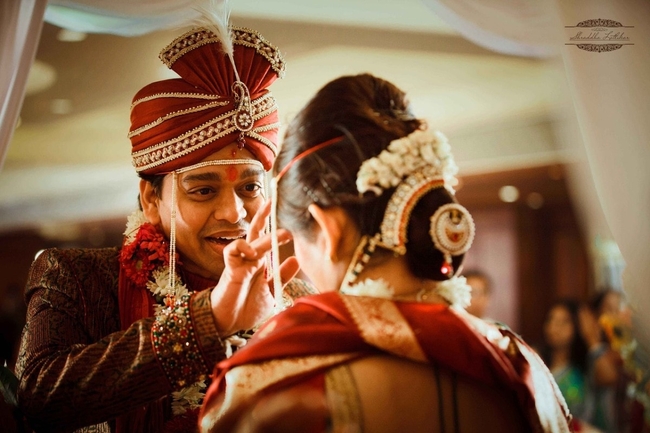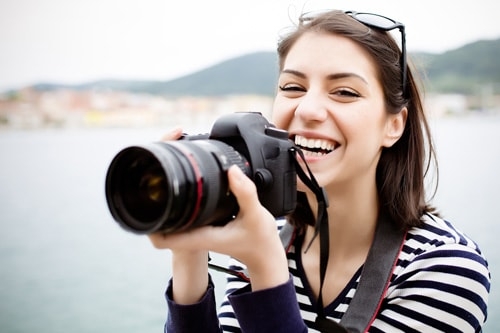Are you ready to photograph some stunning car photos? You may want to give your car some spotlight or show it off in a vintage collector's magazine. You may also be thinking of offering it for sale. Whatever your reason may be, here is a complete guide to what you need to know about car photography.
What is Car Photography?
Car photography is pretty much what the name implies but also a fair bit more. There is an art of capturing a series of car images that catch the eye and fire the imagination of the viewer. The trick is to get the combo just right so that you can make a lasting impression. Doing so is an art mastered by the few.

Cars make excellent subjects for photography. You can really get to know the art and craft that goes into creating the perfect set of car images. At the same time, you also get a realistic picture of the various factors that are involved in creating the perfect car images. It isn't very difficult, but there will be a definite learning curve. Here are We have listed 25 simple photography tips that will help you become better at your craft and take those stunning pictures that you always wanted.
Some of the factors that you need to be fully aware of include things like getting to know the very best gear and camera settings. You will eventually also understand the more complex and layered car photography techniques. These may include light painting, camera panning, and a host of other ideas that creative professionals recommend.
Best Camera and Lenses for Car Photography
The first thing you are going to need to come to grips with will be getting familiar with the best gear to use for first-rate car images. There is one set of gear to use if the car pictures will involve an auto at rest. But there may be a need for a whole other set if you want to capture the vehicle in motion.
What Kind of Camera is the Best for Car Photography?
The best type of camera that you can use to capture state of the art car images will be those that come with a very high megapixel count. This is the type of camera that you need to use in order to create car pictures that highlight every single detail from front to back. The more pixels, the more explicit the detail.
You should also note that a fast auto-focus and frame rate is needed in certain situations. This will be all the more true if you are trying to capture images while the vehicle is in motion. Full frame sensor cameras are an excellent means of capturing this type of motion. However, this is a move that involves expense.

What Kind of Lens is the Best for Taking Perfect Car Photos?
Another key area to pay full attention to will be the lens that you use for your camera. The correct choice of lens will once again vary according to the specific set of circumstances that you are shooting in. You need one type of lens for stationary shots and another to get motion shots.
The final thing that you should be aware of in this regard will be knowing how to neutralize the inherent shininess that comes as a part of the average car's reflective finish. You need to know how to get around this so that your new set of car pictures won't be reduced to a nasty saturated glare no one wants to see.
You should make use of a circular polarizing filter. Attach it right to the front of your lens and then adjust it until you find the exact desired position. If this doesn't work at first, you can compensate. Try different exposures while rotating the filter. You can then put it all back together in post-production. Here are the best photo editing apps of 2021, that are worth your while and can help you save time and give great results on the go.
Role of Lighting in Car Photography
You should be aware that lighting will play a very large role in creating classic car images or automotive art prints. There are several main factors that you need to know about so that you can save time and money by getting your set up right from the start. There are levels of light during day and night that you can take advantage of.
The first thing that you need to avoid is using too much hard light. This will create a reflective glare over the surface of the car that will lead straight to an overly bright, essentially ruined photo. Early morning and late afternoon are
the best times to shoot car pictures out of doors without risking this glare. Read more on Natural Light Photography, to take the perfect pictures outside.
If you don't have a set schedule available for you to shoot the pictures in, you will do best to compromise. You can do this by shooting your car images in a spot that is cool, shady, and as free from excess glare as possible. This will create other problems, such as unwanted shadows, that you will need to correct.
It's probably best for an amateur not to try to experiment too much with strobes or flashes. If you want to go ahead and give it your best try, you should make liberal use of devices such as softboxes and diffusers. These will give you your best shot at controlling the level of the brightness to create a coherent image. Do read our Guide to Understanding Photography Lighting to help you get started.

13 Best Tips for Stunning Car Photography
It will be up to you to do all in your power to ensure the very highest level of car photography as the result of your actions. You can do this by taking note of a wide arc of handy tips and tricks that are out there for you to learn from. Doing so will put you in the driver's seat when it comes to superb car photos.
1. Make Sure You Have the Best Light
2. Keep Your Foreground and Background Equally Sharp
3. Try to Keep Your ISO as Low as Possible
4. Be Sure to Control Your Field Depth
5. Always Stick to Your Personal Vision
6. Don't Be Afraid to Surprise People
7. Make Sure to Get Inside Your Car
8. Choose the Foreground or the Background
9. Don't Shoot a Car at Eye Level
10. Aim for a High or Low Level
11. Don't Go for the Low Hanging Fruit
12. Don't Show the Whole Car in every Photo
13. Use AI for Stunning Automobile Photography
1. Make Sure You Have the Best Light
It's always best to shoot your car photo session during the times when you have access to the maximum amount of natural light. This includes the hour just after sunrise as well as the one just before sunset. This doesn't mean that you can't enjoy a good night car photography session if you get the lighting just right. If you want to read more, here is a Guide to the Art of Night Photography.
2. Keep Your Foreground and Background Equally Sharp
The next thing that you will need to keep in mind is that all aspects of your car photos need to be equally sharp. You can do this by turning the level up on the F-stop of your aperture to a higher value. This should be somewhere between f/14 and f/20. Doing so will help adjust to keep the image from getting darker.

3. Try to Keep Your ISO as Low as Possible
You will need to make sure to keep your ultimate level of ISO to as low a setting as you can. This is the best way to reduce the graininess that can take over if you aren't careful to screen it out. You can do so by using a series of longer exposures. This will be much easier to pull off if you have a tripod.
4. Be Sure to Control Your Field Depth
The background of your car photos, especially during night car photography, should be slightly de-emphasized in favor of your foreground. You can do this by exercising a higher level of control over your exact depth of field for each photo. Set the aperture as wide as you can and then boost up your shutter speed.
5. Always Stick to Your Personal Vision
This is a general rule that should really go without saying. But the truth of the matter is that all too many people, including amateur car photo takers, are inclined to go with the run of the mill. You can miss out on some unique, even genre-defining, shots if you don't stick to your guns.
6. Don't Be Afraid to Surprise People
Sometimes the very best shots come from situations where no one else has ever shot a car in. The very best night car photography shots are the ones that come straight down the middle and aim directly at the viewer. If you need to take a few chances to get these shots, do it. The results will be more than worth it.
7. Make Sure to Get Inside Your Car
There are plenty of top of the line photo experts taking great shots of cars roaming around the country or tearing up the freeway. But you also need to make sure that you get plenty of shots of the interior of your car. This will be a crucial move to make if you are trying to get the car sold in a very short time.
8. Choose the Foreground or the Background
Do you want to highlight only the foreground in a car photo? Make it sharper with a much higher aperture. This will show the front of the car itself, sharply in relief against the background. Would you rather highlight the background to show the car in hot motion? Lower the aperture to make the foreground less prominent.
9. Don't Shoot a Car at Eye Level
One of the worst mistakes that photographers tend to make is to shoot a car at eye level. This is considered a glaring error because it only works for people who are already familiar with the vehicle. If you are trying to emphasize its total uniqueness, especially with a view to selling it, you will need other angles. Here are some great tips on using perspective in photography.

10. Aim for a High or Low Level
Instead of taking a photo of your car at strictly eye level, your best bet will be to choose a high or low-level shot. You can use the tripod or even a stool. The point is to highlight the car at an angle that gives it some excitement. If you want to shoot from a low angle, get on your knees to show its imposing size.
11. Don't Go for the Usual Car Photos
All too many people think that you ought to just go for the obvious shots. This is a mistake that turns people off from car ads posted online. Go high, go low, shoot from way above, but find an angle that interests you. If you are intrigued by a shot that highlights grace or power, feel free to share it.
12. Don't Show the Whole Car in Every Photo
Sometimes, a little glimpse of the car is more suggestive than a simple shot of the whole thing. This is true even if you are doing a shoot for the purpose of selling your car. Of course, people need to know what the whole car looks like. But don't be afraid to do some shots that show off a little piece of the puzzle.
13. Use AI for Stunning Automobile Photography
Professional car photography is very costly; you need expensive studios (or picturesque locations) and seasoned photographers. The investment might not seem worth it, but due to tough competition, it is a crucial part of automotive digital retailing. Thankfully, modern tech has helped solve this problem! You can use AI-powered self-serve photography solutions, some of which even have the option for 360 photoshoots. AI photography is quick as well as affordable.
Remember: Stay Away from Side of the Road Shots
Side of the road shots is all too obvious. Sure, you have a car in a location that is too gorgeous to leave out. But why show the boring road? Move the car a little bit into the woods so people see the natural beauty of the area behind it. This will be a much more pleasing shot than just the dirt of the road.
Here are some Great Tips for Night Car Photography
Night car photography is an art unto itself. This is a field that produces some of the most exciting car pictures known to the industry. However, if getting top-notch car images is difficult to achieve during the day, you can just imagine the roadblocks you can run into at night. With a bit of work, it can be done.
Get a Camera with a Fast Sensor
You will need to start with a camera that is equipped with a very fast reacting sensor. This sensor needs to be able to take an image in and process it pronto. With this in mind, your best bet will be to use a DSLR or micro 4/3 camera. These are models that come with removable lenses and feature a full manual mode.
Make Sure to Get a Good Tripod
It's a good idea to invest in a tripod. This is a device that will let you take a series of much longer exposures in the absence of daylight. The quality of the tripod you use will naturally be equivalent to the size of your budget. Try to save up a little to get at least a medium line model that will stay steady.
Keep Well Away From Sources of Glare
Keep away from street lamps, other cars, and any source of unwanted light. You don't want light from other cars or surfaces reflecting in a harsh way on your subject. While the lack of daylight will reduce glare, the reflected light from street lamps is often worse. Get your car to a safe, shaded, and secluded area.
How to Master Night Car Photography
The art of night car photography is now ready to be mastered by you. Your camera and tripod are firmly in place, as is the vehicle you have chosen for the shoot. Now is the time to put the camera in full "Manual" mode. Once you have done so, you can set the aperture to the sharpest setting that has the full car in view.
Make sure that the car pictures you come away with are completely noise free. This will best be accomplished by setting the ISO of the sensor to a level of 100. This should be the very lowest ISO setting available on the camera that you are using. It ought to be able to shut out all kinds of excess background noise.
If you are in the live view setting, the screen in front of your eyes will very likely be almost totally black. Move the exposure up. Then autofocus the lens. Doing so will activate the light metering that will let you know how long you need to expose the image. The right level is reached when the meter says 0.
Locate your Drive Mode button. You will need to take it off of One Shot and place it instead on a 2-second delay. Doing this will get rid of the unpleasant shake that occurs when you take your hand off of the shutter too quickly. Now press the shutter, wait until the exposure is over, and check the new image.
It's Time to Take Some Perfect Car Pictures
There is no time like the present to get started on snapping some world-class car pictures. The art of capturing state of the art car images is one that is easier than ever to pick up on.
Do remember to showcase your latest work on your portfolio website. With our handy guide on how to make your portfolio website, you can start today. Make sure that the portfolio website builder you choose offers the flexibility, features, and ease of use you need to put together a professional portfolio website without requiring any coding knowledge. Pixpa is a portfolio website builder platform that is trusted by creative pros around the world. Have a look at some stunning portfolio website examples.














